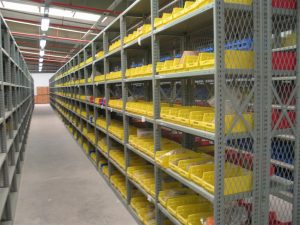 In procurement, the goal is clear: secure the right parts, at the right time, for the right price, while minimizing inventory costs and avoiding supply disruptions.
In procurement, the goal is clear: secure the right parts, at the right time, for the right price, while minimizing inventory costs and avoiding supply disruptions.
But amid this balancing act, a hidden cognitive bias often distorts decision-making: survivorship bias.
This error, focusing only on parts that are frequently used or successfully delivered, can lead to underestimating the risk posed by rare, critical components that don’t appear in regular demand data but can cause massive operational downtime when missing.
Survivorship bias in spare part procurement occurs when we draw conclusions based only on visible, successful outcomes — such as high-turnover parts or successful past orders—while ignoring parts that failed in the supply chain, caused past outages, or were never reordered due to their infrequent use.
In the context of spare part procurement, this can mean:
- Over-reliance on demand history: Standard procurement models prioritize parts with consistent usage. But rare failures of critical parts may never register in demand history until it’s too late.
- Excluding discontinued or obsolete parts: Parts for legacy equipment that only failed once may have been missed in planning—even though they remain operationally critical.
- Copying past sourcing strategies without context: Imitating another facility’s procurement success without considering their asset base or risk tolerance can lead to unseen gaps.
- Unseen Criticality Gaps
- False Inventory Optimization
- Delayed Response to Rare Failures
Procurement may successfully meet all regular demand and still fail when a single unplanned failure halts operations—because the critical part was never stocked or sourced.
Lean inventory targets might appear met, but only because they ignore the cost of parts never previously needed. When those parts are suddenly required, expedited shipping or unplanned downtime eliminates any perceived cost savings.
Without a procurement strategy for long lead-time or sole-sourced items, rare part failures can trigger extended shutdowns, especially in remote or high-risk operations.
To build a more resilient spare parts procurement program, professionals must go beyond traditional reorder point logic. Consider the following approaches:
- Risk-Based Procurement Planning
- Review “Lost Cases”
- Use Cross-Functional Input
- Strategic Supplier Engagement
- Maintain Critical Obsolescence Watchlists
Don’t just classify parts by turnover—include failure impact and replacement lead time in your sourcing matrix. A rarely used but long-lead critical item may warrant stocking or at least a supply agreement.
Analyze past disruptions, work orders, or maintenance logs for cases where a required part was unavailable. This forensic review reveals what typical data-driven methods miss.
Collaborate with maintenance and reliability teams to identify parts they worry about—even if those parts haven’t yet failed. Maintenance insight is often the only source for “unseen risks.”
For low-volume, high-risk parts, establish framework agreements, vendor-managed inventory, or emergency sourcing plans to ensure availability without overstocking.
Spare parts for aging equipment may not appear in procurement systems because they’re rarely used. But without a plan for their obsolescence, procurement may face an avoidable crisis.
Imagine a turbine monitoring module that has only failed once in ten years. It never triggered a reorder and isn’t in the min-max plan. But when it fails again, it has a 6-month lead time, and the only supplier has shut down. The part wasn’t on anyone’s radar—not because it wasn’t critical, but because survivorship bias erased its relevance from the data.
Survivorship bias skews perception. As procurement professionals, relying only on what’s been frequently sourced or recently used can lead to false confidence. Strategic sourcing must account for what could fail, what’s hard to get, and what’s critical to operations, even if the data doesn’t immediately show it.
The future of smart procurement lies in moving beyond efficiency alone – toward resilience. That means factoring in the unseen, the rare, and the high-risk. Because when the forgotten part fails, it’s not just a sourcing issue, it’s an operational crisis.
If you found this valuable and you want to dive deeper into spare part management, you can review your training options here.
Posted by Phillip Slater